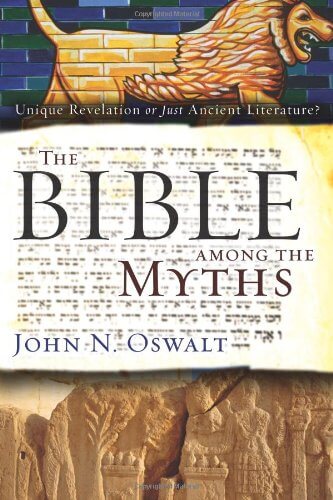Book Review: The Bible Among the Myths
The Bible Among the Myths:
Unique Revelation or Just Ancient Literature?
by John N. Oswalt
Review by Vic Minish
Although The Bible Among the Myths: Unique Revelation or Just Ancient Literature? is not about science per se, it addresses important questions of interest to Christian science teachers, such as the historic verifiability of Scripture, how to understand what the Bible is and is not doing, and the relationship of the Bible to other Ancient Near Eastern (ANE) documents. The author, Dr. John N. Oswalt, is Visiting Distinguished Professor of Old Testament at Asbury Theological Seminary, Kentucky.
The book is divided into two sections—the Bible as purported myth, and the Bible as historical document. Oswalt begins with a thorough investigation of the numerous competing definitions of “myth.” He concludes that, when properly defined, the Bible is not myth. Myth presupposes a particular view of the world and how it operates, which he labels as “continuity.” This is the worldview of most ANE cultures. The worldview of the Bible, as Oswalt describes it, is “transcendence.” The Hebrew people who wrote the Bible may have thought in similar categories to their ancient neighbors, but their understanding of God was unique. Oswalt concludes, “It is one thing to describe how a people thought and quite another to explain why they thought that way.” From Oswalt’s perspective, whether or not we agree concerning specific theories of human origin, the biblical claim that God is the transcendent creator of the physical world and cannot be manipulated from within it is not a view arrived at through a natural process, but revealed by God.
He goes on to ask that the Bible be allowed to determine its own starting place and claims, rather than insisting it must categorically be doing the same thing as other ANE texts. Oswalt specifically deals with the creation stories of the ANE and what those stories said about the gods, humanity, and how humanity should live, together with the contrasted and unique claims of Genesis. He ends his argument with the conclusion that while it is true that the Hebrews used language and concepts that were familiar to their neighbors and surroundings, they used these devices allusively, illustratively, and pejoratively to speak prophetically into their world rather than to mimic those around them.
The second portion of the book concerns the Bible as a historical document and the methodologies adjudicating historical problems, including scientific and archaeological data. He again carefully examines various proposed definitions of history and concludes that the Bible is history, yet not modern secular history. His work examines a variety of philosophical and historiological perspectives and evaluates the theological implications of each. In his final analysis, Oswalt argues that the Bible makes theological claims that cannot be disassociated from its historicity. He then considers the significance of the historicity of the Bible for the Christian faith, defending it against the existential treatment of the Bible put forth by Rudolf Bultmann and his followers, and against the more modern treatment by process theology.
The concluding chapters deal with explaining the origin of the Bible as unique in world literature. He concludes that any explanation other than the one offered by the Bible itself (God revealed it) is inadequate to the task. Oswalt’s work is comprehensive and an excellent resource for science teachers with no previous or specific theological or historical training in mythologies of the Ancient Near Eastern world.

